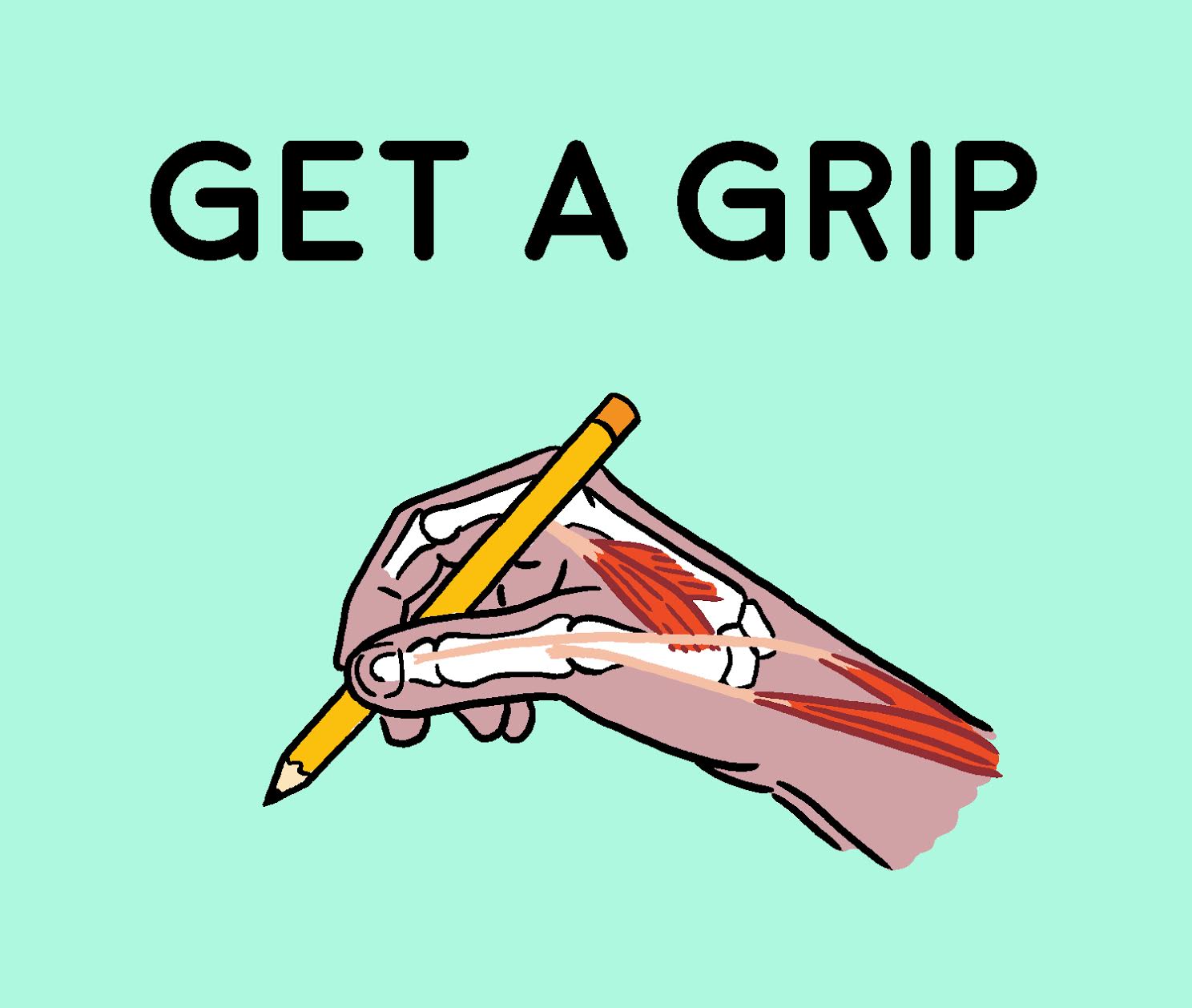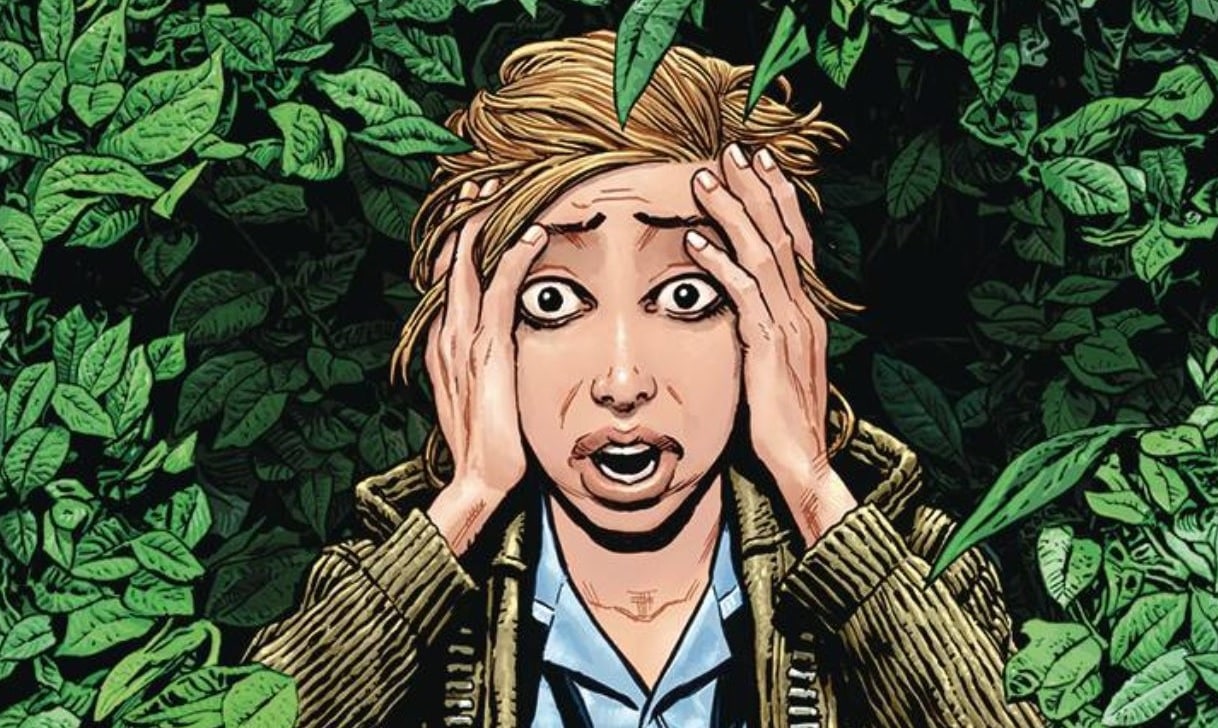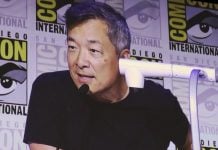Continuing our conversation with artist/letterer Nate Piekos on his arm injury and recovery. You can read part 1 here.
In Part 2 Nate talks about his workday as an injured artist, why he decided to tell his clients he was injured, and what chronic pain is like for him. At the end of the interview I’ve added an update on Nate’s injury. Remember, everyone’s experience recovering from injury is unique. This article is not meant to offer medical advice.

KW: I think it’s good that people, especially younger artists, understand that this is something that they might have to prepare for later in their careers.
NP: I’ve also had to cut back my workday, obviously.
KW: How many hours did you used to work in a typical day, and what do you work now?
NP: Ten hours a day, 5 days a week was probably average, before. I’ve always tried not to work weekends. I’ve been pretty good sticking to that, but now I don’t work weekends for any reason. My workday is now about 6 hours with a break every hour for 15 minutes, and an hour lunch break in the middle of all that. It’s still a long day, but it’s long because of all the breaks.
I’m an impatient person, by nature… With most injuries you eventually turn a corner and you know you’re getting better. You go “Oh! I turned a corner! I’m healing! I’m getting better!” And with tendinitis, I kind of equate it to where you’ve got these big hills that are the good days and then the valley, and it’s a bad day. And then you go up again. You’re just hoping that all these hills and valleys will just shorten up and you will get to flat land again.
KW: And you’re lucky to have your wife there to encourage you!
NP: She’s the only thing that’s kept me sane through this because there’s a huge mental component to being like this. And it’s tough.
KW: This is an odd question, but what was your emotional relationship to your work before your injury? How did it change?
NP: Before tendinitis? My whole life I’ve loved what I do. My wife always tells me that my worst day in comics is still better than my best day in corporate design.
The biggest change now is that because of the time constraints my day is set at 6 hours with all these breaks. It’s a race to be creative. Before I had all the time in the world to do creative things, not in pain. Now I know that I’m going to be in pain today. It’s going to hurt so I have to do the essentials. It’s like there’s a timer running on me all day. And I know that if this hurts too bad I have to step away no matter what I’m doing because it will only get worse if I don’t. You can’t push through it. It’s self-defeating because you’ll be just as bad or worse tomorrow if you try that.
- Illustration by Kriota Willberg

KW: I really admire your discipline. It takes a lot of self-control to take breaks. I feel that a lot of artists think that they have to push through because if they suffer, that makes them a better artist. I think it’s easier to do that then to do what you are doing. To actually say, “No. I love this and I have to stop it right now or I won’t be able to do it tomorrow.”
NP: I’ve always been very organized. I tend to be a type A personality, obsessive/compulsive. Yes, I’m a creative person and they don’t tend to be very structured, but for some reason (structure) works for me. When I sit down in the morning I plan my day. And I only get done the amount of stuff I get done because of how organized I am. That worked to my benefit, I guess.
I haven’t really missed any deadlines. I adjusted to take only as much work as I knew I could get done with my limitations, right now. It’s not fair to affect someone else’s schedule because of me… I only take what I can do at this point and if that means bowing out of one project to take on another project that works better, then that’s what I have to do.
KW: Ultimately your clients are probably more grateful that you didn’t have to beg out in the middle of a project.
NP: I just think it’s better to be upfront. Most of the people I’ve worked with who are starting a new project are like, “Oh! We want you on this.” If I knew them well enough, if I’ve worked with them before, I’ll direct message them and say, “Look. This is what’s going on with me. I may not be as fast as I used to be.” I have no problem with them telling me, “Nate, we’re going to go with someone else.” I want to give them an easy out… to at least tell them right up front what is going on.
KW: That brings up the issue of whether to disclose your status to a client or not. A question artists face when they are working injured.
NP: A lot of people think that that’s a dangerous thing to do because if you start telling people you’re injured, that’s it! The work’s going to dry up and nobody’s going to want you.
KW: Has that been true, for you?
NP: You know, I got to the point where I just said… excuse my language, but I said fuck it. I put that thing out on Twitter. Most of my editors already knew, probably knew. And I said I can’t be the only one who’s got this problem. It seems to be this bizarre badge of courage in the comics industry that I have to work all night and all weekend. So I knew I couldn’t be the only one. But I think a lot of people didn’t want to talk about it for that reason. Like, Oh! If I say I’m injured people aren’t going to want to work with me. It just got to the point where I didn’t care. Fine! If you don’t want to work with me, don’t work with me.

KW: But for you so far, you’re not spending any of that six hours a day twiddling your thumbs and waiting for work.
NP: No. That’s the flip side. I’ve been here long enough, doing what I do. I’m always busy.
KW: And you’re good at it.
NP: I’m lucky. And the artists and editors that I work with have been very accommodating or at least sympathetic. So that’s good.
Privately I’ve gotten a lot of feedback from artists who say, “Oh my God! I’ve got something like this, and I’m working through it too. What have you been doing?”
KW: Have you been flooded with advice from people?
NP: Well, the twitter thing is still making the rounds. People are saying, you should do acupuncture, or you should do this or that. I just say, “Okay! Thank you!”
I’m looking forward to the day when I can just look back on this and smile and say, “Well, that was a year or two years of my life that I will never have to repeat because now I have the tools!”
I will never work the way I was working before. It’s really not a badge of honor just to sacrifice your health, because this (injury) sucks! It’s horrible. It’s pain every time you pick up a pen to do the thing you love most. You are going to be in pain. That’s a horrible thing.
KW: Do you feel like your relationship to pain has changed since this started? What did you think about pain before, and what you think about being in pain, now?
NP: Being in pain and being in persistent pain are two different things. I think it’s the mental aspect more than anything else, of being in pain all the time. It’s hard to stay in a good mood. It’s hard not to snap at people who are around you because you don’t feel good. But, I guess you just learn skills. My pain scale was readjusted when I was in my 20’s and I had appendicitis. I woke up from that surgery in an otherworldly amount of pain. For the rest of my life, that’s my barometer. “It’s still not as bad as that time I woke up from surgery!” But this is a different kind of pain, That was please make me unconscious so I don’t have to feel this kind of pain. This is more just constant aching … it goes from bad to worse and back to bad.
KW: Do you have anything else you want to tell people?
NP: Not without sounding preachy. I put my message out on social media because I knew that there were people like me who didn’t know they were hurting themselves. Maybe if it helps anybody think, “Oh jeez! I should really look at my posture!” Or “I should get a better chair!” or “I should take a break!” Then that’s worth it. Like I said I’m a glass half empty kind of guy. I think people are going to go, “Oh that’s too bad for him! … Well! Back to work!” But if it helps a couple of people, that’s good.
GOOD NEWS! NATE’S HARD WORK IS PAYING OFF. In a follow up email two months later Nate wrote, “An update for you: I’m improving! My wrist is back to almost normal! My shoulder is nearly as good. My neck is improving, but it’s the last hold out. I played guitar again for the first time last week. It felt wonderful. :)”








